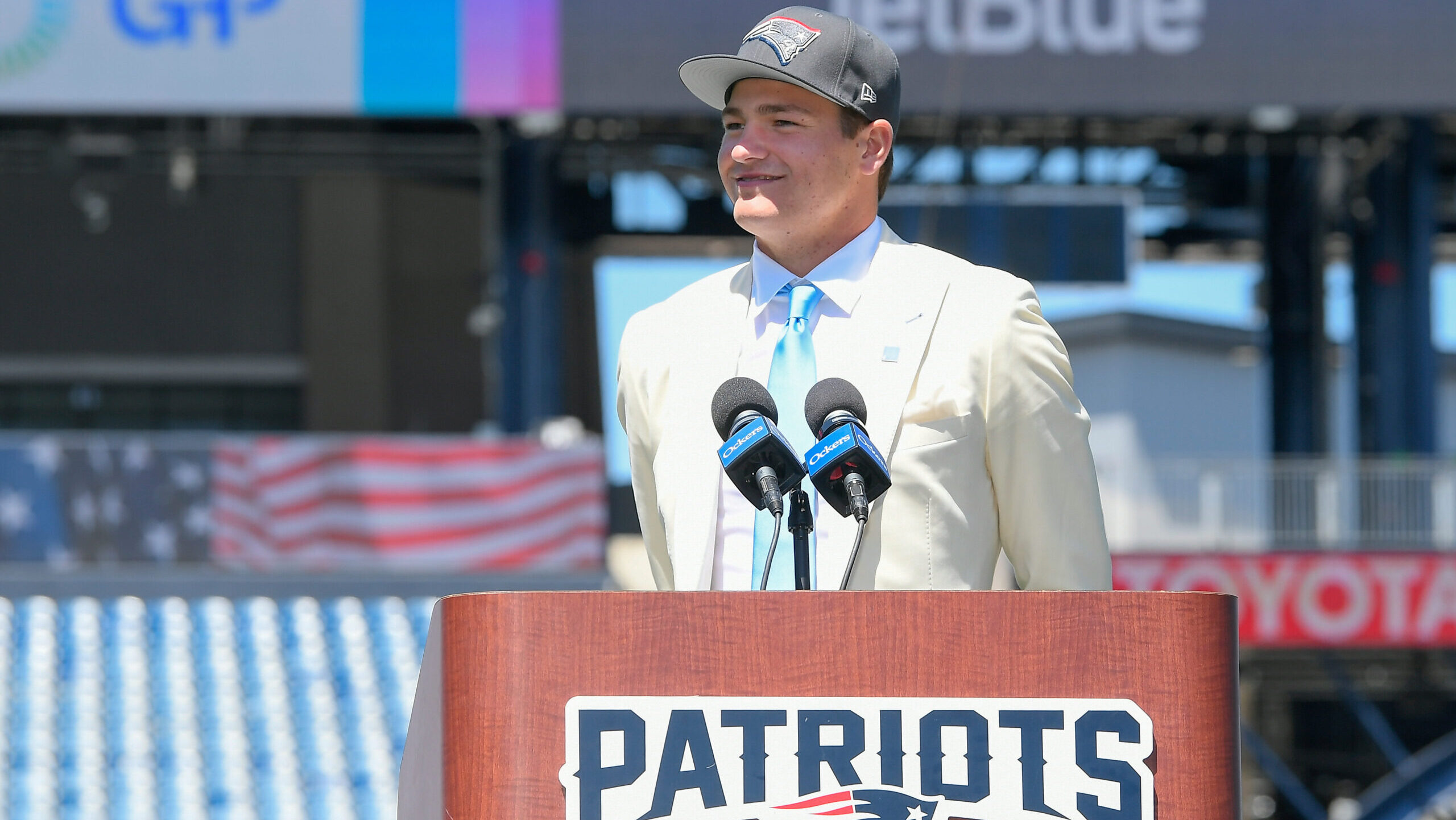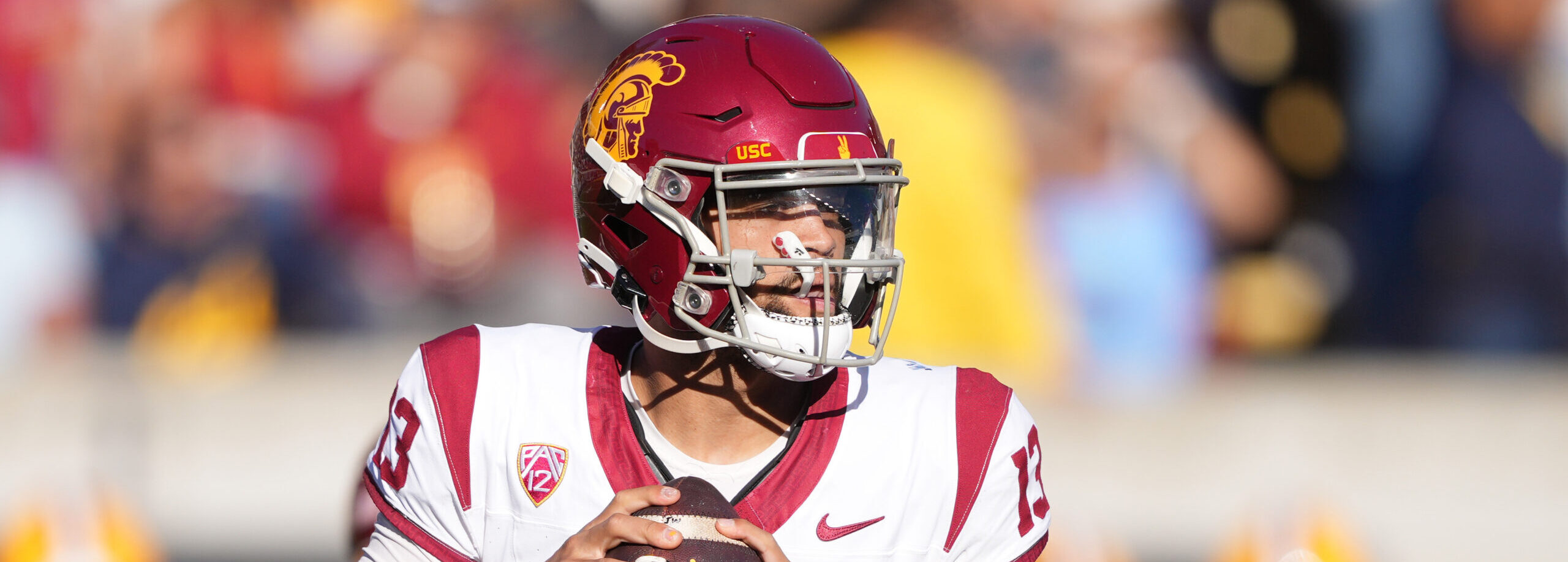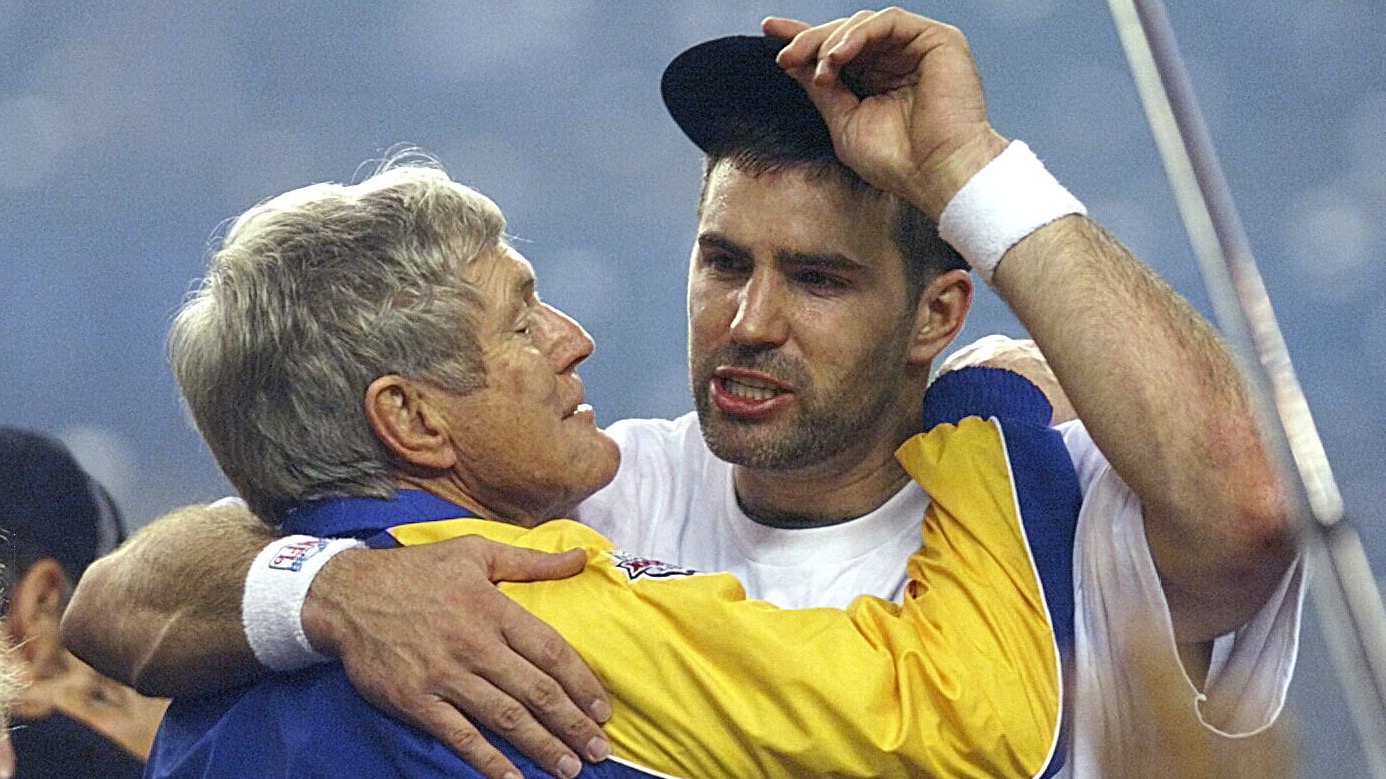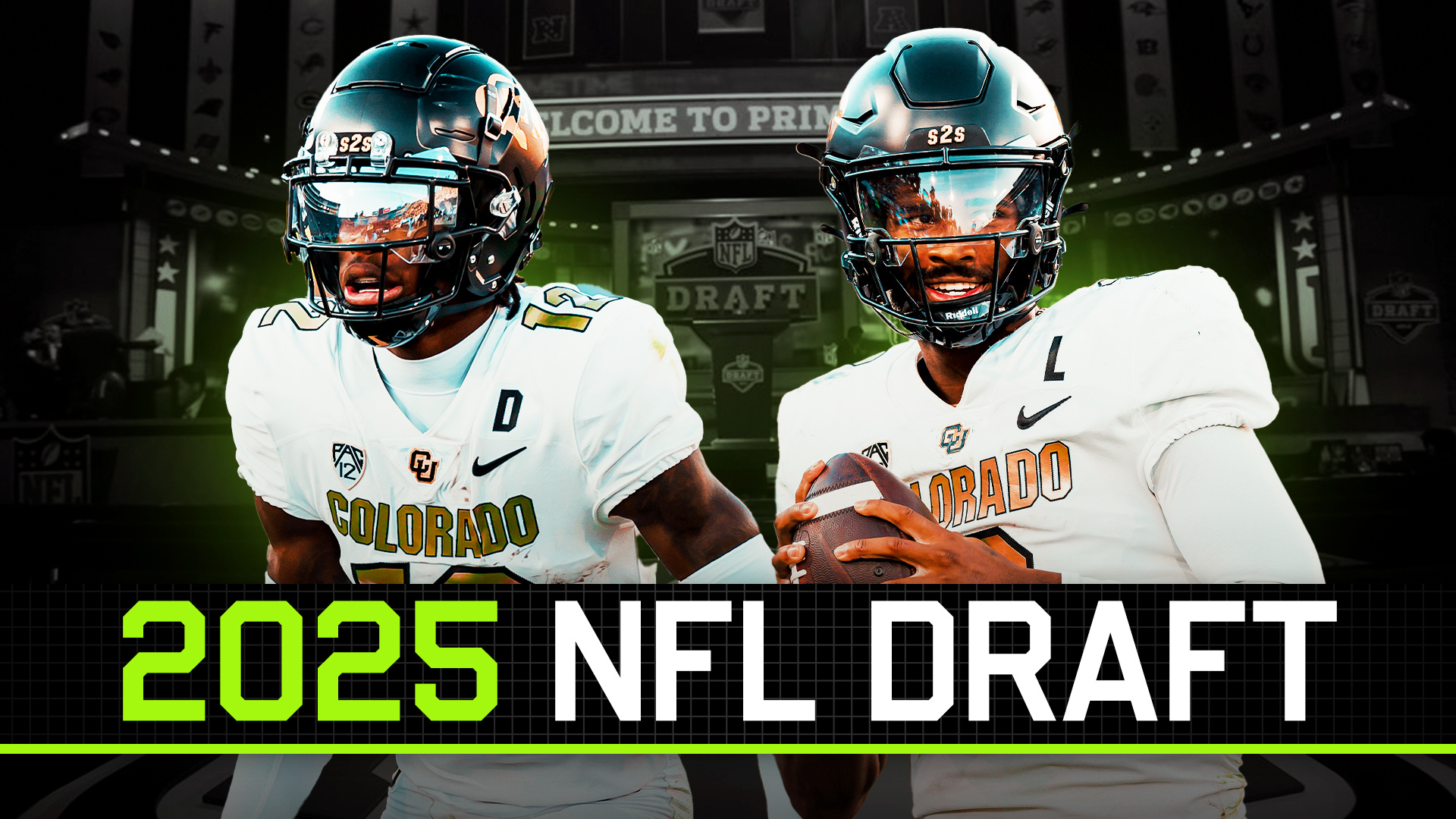NFL Analysis
3/19/24
10 min read
2024 NFL Draft: Ranking Top 15 Running Back Prospects
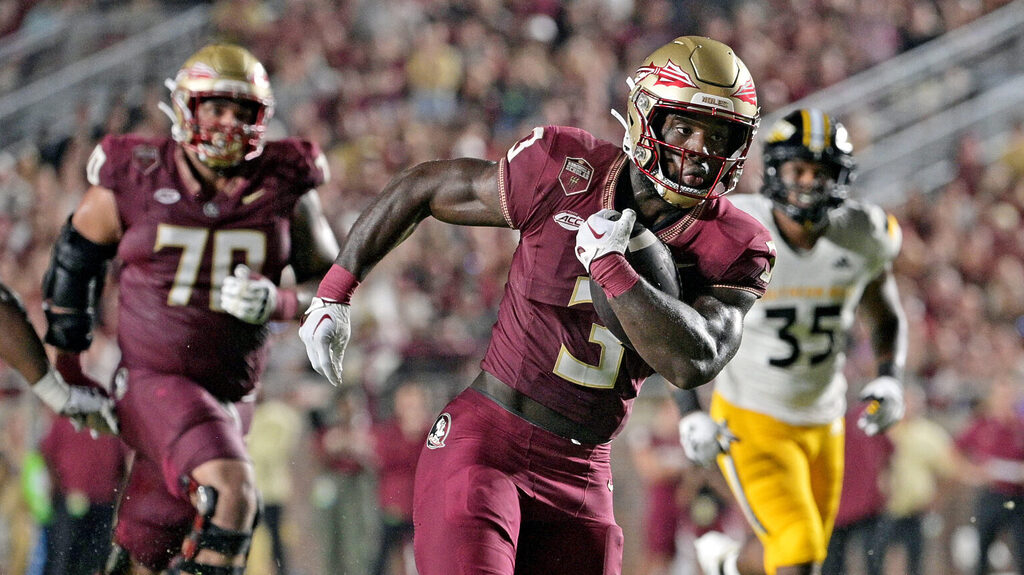
The 2024 NFL Draft is quickly approaching, and this year's running back class has several interesting options. Running backs aren't expected to fly off the board in April, but there are always late-round contributors at this position.
Here's a look at our top 15 running back prospects.
>> READ MORE: QB | WR (Deep Threats) | WR (Route Runners) | TE | OT | G | C
RANKING 2024 Running Back PROSPECTS
15. Jase McClellan, Alabama 

Big Board Rank: 134
Height: 5-foot-11
Weight: 196
Jase McClellan projects best as a three-down, change-of-pace running back. He is scheme versatile because of his experience with multiple run schemes, but he excels at gap and duo runs.
McClellan can play on third downs, especially if he improves his pass pro, but he won't be a top option right now. He can cover kickoffs if needed, but he was not asked to do this outside of his first two seasons in college.
He is a patient and slippery running back from Alabama’s offense that featured a diverse run game. McClellan spent his entire four-year collegiate career in Tuscaloosa and started 17 of the 38 games he played for the Crimson Tide.
>> READ MORE: McClellan's Full Scouting Report
14. Cody Schrader, Missouri 

Big Board Rank: 131
Height: 5-foot-9
Weight: 214
Cody Schrader projects as a change-of-pace back in any offensive scheme. He’s shown the vision and patience to find holes in zone schemes, but his downhill running style suggests he’d be effective in a gap scheme, too.
On third down, Schrader can develop into a difference-maker. He has the willingness and smarts in pass pro, but he needs to get a bit stronger. Schrader has natural hands as a receiver but must improve his route running and savvy.
His play speed and toughness will allow him to be a productive special teams player if he improves his attack angle downfield, and he could even see some time as a kick returner.
>> READ MORE: Schrader's Full Scouting Report
13. Jaylen Wright, Tennessee 

Big Board Rank: 130
Height: 5-foot-11
Weight: 210
Jaylen Wright projects as a change-of-pace back who can fit in any scheme. He will be best in an outside zone scheme where he can showcase his speed, vision and power. He should be a sufficient third-down option with the traits to develop and become a difference-maker.
While he isn’t incredibly dynamic as a receiver, his natural hands give him value. Plus, his ability to pass protect will get him on the field. He has some value as a kick returner, but he also contributed as a core four special teamer as a freshman, something that he could be at least sufficient at in the NFL.
>> READ MORE: Wright's Full Scouting Report
12. Ray Davis, Kentucky 

Big Board Rank: 129
Height: 5-foot-8
Weight: 211
At the next level, Rey Davis projects to be a backup change-of-pace back who can be used on all three downs. He has the upside to grow into a lower-end starter or spot starter in case of injury.
While he can succeed in a zone scheme, his traits fit better in a gap or duo scheme. He will need to sharpen his blocking skills to be trusted on third downs. Still, Davis has the receiving chops, motor and effort to be given a shot and be effective as a checkdown receiver.
He has limited usage on special teams, but his ability with the ball in his hands suggests he can be a kick returner.
>> READ MORE: Davis' Full Scouting Report
11. MarShawn Lloyd, USC 

Big Board Rank: 128
Height: 5-foot-9
Weight: 210
MarShawn Lloyd projects as a versatile change-of-pace back who could see usage on all downs with his balanced skill set. His route running and explosiveness could pave a path to a third-down role.
However, his size might be a limiting factor in pass protection. He has limited special teams experience in college, but his effort and overall athleticism should allow him to contribute.
Lloyd is a strong, muscular running back who has filled his frame with muscle. He has the burst and deep speed to threaten defenses at the next level. He plays with tenacity in each aspect of his game, running hard through tackle attempts.
>> READ MORE: Lloyd's Full Scouting Report
10. Jawhar Jordan, Louisville 

Big Board Rank: 125
Height: 5-foot-9
Weight: 193
Jawhar Jordan projects as a change-of-pace running back. He can fit either scheme. A zone scheme would allow him to use his vision to press holes and get upfield. However, a gap scheme would take advantage of his burst and downhill running style.
On third downs, he shouldn’t be used in pass protection early in his career. Still, he has the hands and receiving ability to be effective out of the backfield. His size likely suggests he won’t contribute much on special teams, but he does have kick return experience.
>> READ MORE: Jordan's Full Scouting Report
9. Braelon Allen, Wisconsin 

Big Board Rank: 121
Height: 6-foot-1
Weight: 235
Braelon Allen projects as a backup running back who fits best in an outside zone-running scheme. His patient running style and lack of an ideal burst can be best utilized in this scheme.
On third downs, he can see the field primarily in pass protection but can offer value as a receiver. His size, strength and toughness should make him a contributing special team member.
Allen is thickly built with noticeable muscle. His leg strength is apparent when taking on contact, but he lacks breakaway speed. His short-area agility is slightly above average for his size, but he loses some of the advantage with extra steps.
>> READ MORE: Allen's Full Scouting Report
8. Dillon Johnson, Washington 

Big Board Rank: 119
Height: 6-foot
Weight: 217
Dillon Johnson projects to be a reliable backup running back who can fill a role on any down. He is a heads-up player who looks to impact winning.
Johnson has scheme versatility on running downs and is a reliable blocker and receiver on passing downs. While his lack of explosiveness and speed will likely prevent him from becoming a high-impact player, he has the physical build and running style to be a team’s workhorse.
He should contribute on special teams early and has the toughness coaches seek.
>> READ MORE: Johnson's Full Scouting Report
7. Dylan Laube, New Hampshire 

Big Board Rank: 112
Height: 5-foot-10
Weight: 206
Dylan Laube projects to be a threat as a third-down receiving back. His ability to impact the game from the backfield or out of the slot means he can play in two-back personnel. His all-around skill set lends itself to gadget plays.
As a runner, he will be most effective in a wide-zone scheme, and he can be effective as a change-of-pace runner. Laube also projects to make an impact on special teams as a returner. He excelled in this role in college. He was a kickoff and punt returner and figures to continue that at the next level.
>> READ MORE: Laube's Full Scouting Report
6. Bucky Irving, Oregon 

Big Board Rank: 109
Height: 5-foot-9
Weight: 192
Bucky Irving projects as a role-playing starter who can be used as a change-of-pace runner and a dynamic receiving threat out of the backfield. He fits best in an outside zone running scheme and has some versatility in passing schemes.
Despite his physical tools and ability to break tackles, he was more of a steady, reliable back than a home run threat. A more defined role could help him make more big plays, and his versatility as a receiver makes him dynamic on third down.
His pass protection leaves something to be desired, but a receiving-heavy third-down role should provide an ideal fit for him. Irving's elusiveness could be appealing for a return role, but he has minimal experience there and should not be considered a serious contender at first.
>> READ MORE: Irving's Full Scouting Report
5. Blake Corum, Michigan 

Big Board Rank: 73
Height: 5-foot-8
Weight: 205
Blake Corum projects as a lower-end starter early in his career who has scheme versatility. However, he's a better fit in a zone scheme where he can use his vision, speed and elusiveness to get upfield.
Based on his pass-pro ability, he will have a limited role on third downs but can still be effective in the screen game and routes that get him in space. He has experience returning kicks, and his skill set suggests he can continue that in the NFL. However, he will struggle to contribute anywhere else on special teams.
>> READ MORE: Corum's Full Scouting Report
4. Will Shipley, Clemson 

Big Board Rank: 67
Height: 5-foot-11
Weight: 206
Will Shipley projects as a low-end starter in a mixed rushing attack. He will need to develop his pass-pro efficiency to be a full three-down starter. If he is on the field on third downs, he would be a good matchup out of the backfield against a linebacker and can pick up yards.
Shipley can be a core member on special teams as a kick returner because of his ability to accelerate and work in open space. He is a lean athlete with a balance of strength and quickness. Shipley is a driven athlete and is willing to do work in every facet of the game, with or without the ball.
>> READ MORE: Shipley's Full Scouting Report
3. Jonathan Brooks, Texas 

Big Board Rank: 66
Height: 6-foot
Weight: 216
Jonathan Brooks projects as a low-end starting running back who would be best served in a zone-running scheme. This would allow his speed and quickness to shine. He can get a runway going east and west and cut upfield when daylight presents itself.
Being paired with a bigger back with more power would make him a good complement to a running back room. Brooks can be a reliable pass catcher but must improve his pass protection to consistently play on third downs. Brooks tore his ACL late in the 2023 season, and his availability going into 2024 is uncertain.
>> READ MORE: Brooks' Full Scouting Report
2. Audric Estime, Notre Dame 

Big Board Rank: 65
Height: 5-foot-11
Weight: 221
Audric Estime projects to be a low-end starting running back who can be a good contributor on first and second down. His downhill, bruiser running style will allow him to carry the bulk of the workload in a running back room.
He should be paired with a back who thrives more in the passing game. While his own impact in the passing game will limit his play time, he has sufficient hands and can develop into a good pass-protecting back. Estime has limited experience playing special teams but can serve a role with his toughness and physicality.
>> READ MORE: Estime's Full Scouting Report
1. Trey Benson, Florida State 

Big Board Rank: 60
Height: 6-foot
Weight: 216
Trey Benson projects as a low-end starter who will primarily play on first and second down. He shows the ability to play in a zone and gap run scheme, but his best fit is in a zone scheme, where he can make a cut and get downhill quickly.
Benson has some ability as a pass catcher, showing natural hands and the ability to run the RB route tree. However, he will need to improve his pass pro to be a true three-down player. He has the size, speed and kick return experience to contribute on special teams in multiple areas.
>> READ MORE: Benson's Full Scoutng Report


